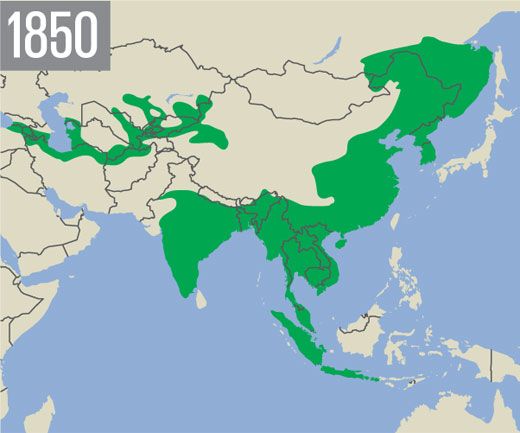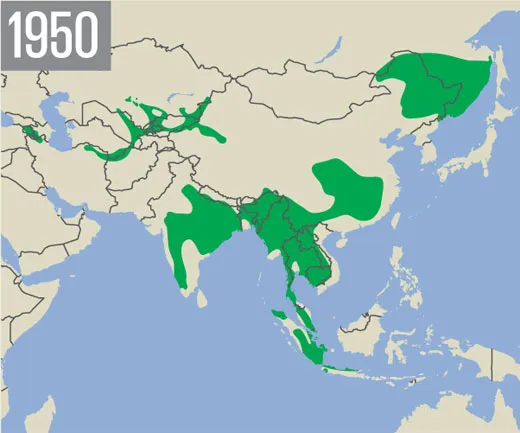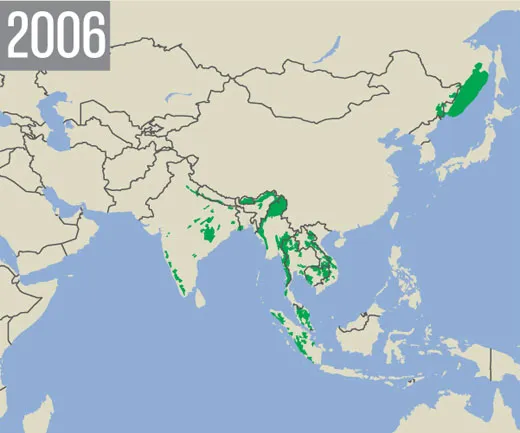A Debate Over The Best Way to Protect the Tiger
Experts battle each other over a $350 million plan to keep the tiger from becoming extinct
The question of how best to save the tiger population is surprisingly contentious. In 2010, officials gathered for a summit in St. Petersburg, Russia, organized by the World Bank and produced the Global Tiger Recovery Plan, which calls for increasing conservation efforts in existing reserves while developing larger protected areas to connect the sanctuaries. The stated goal: double the world tiger population by 2022.
Nearly two dozen of the world’s leading tiger biologists—including Ullas Karanth and Panthera CEO Alan Rabinowitz— vehemently opposed the plan. They felt it would spread conservation resources too thin, because 70 percent of the world’s remaining tigers are concentrated in small reserves (like Nagarhole) that cover just 6 percent of their current range. Rather than trying to protect massive swaths of forest that harbor few cats, the biologists argued, conservationists have to circle the wagons and protect the last core breeding areas.
“With the limited resources that we have, we need to perform triage on areas with the largest number of remaining tigers,” says Joe Walston, director of Asia programs for the Wildlife Conservation Society and the lead author of the scientific article criticizing the recovery plan. “If we fail at these source sites, all else is insignificant .” And if core populations can be stabilized, he says, they will supply tigers to the surrounding landscape. Karanth’s camera-trapping efforts in Nagarhole and Bandipur national parks have confirmed at least half a dozen tigers dispersing to surrounding forest in recent years.
Smithsonian’s John Seidensticker, an independent adviser for the World Bank initiative, disagrees that small strongholds should be protected rather than larger landscapes with few of the endangered cats. “There is no time left to have one or the other, you have to do both at the same time,” he says.
The World Bank’s global strategy would cost $350 million over the first five years, far more than a strongholds plan. Seidensticker and others are looking into various sources of funding. One approach would link tiger conservation with carbon trading. Polluters could offset their emissions by paying others to keep forests, which absorb carbon dioxide, intact. Forests that contain tigers would receive a premium.
“You’re not going to raise $350 million for tigers alone, you are going to have to link in carbon and likely [fresh] water,” says Eric Dinerstein, World Wildlife Fund chief scientist and a World Bank consultant. “If you do that, you get a triple win: income streams that promote rural livelihood, protecting tigers and improving governance of natural resources.”


